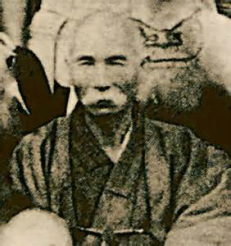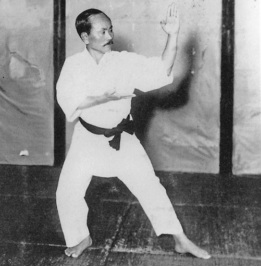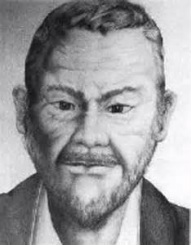|
Master Anko Itosu - 1830 to 1915
Anko Itosu is considered the father of modern Karate although the same title is sometimes given to Gichin Funakoshi (mainly because Funakoshi actually made Karate known throughout Japan). Itosu's year of birth is dated in various sources to 1830, 1831, or 1832, and he died in 1915. While he certainly did not invent Karate himself, his codification of the forms learned from his master, Sokon Matsumura, and the wide dissemination of his teachings to masters of the various traditions that had developed, make it a benchmark for any bona fide Karate instructor to be able to trace his lineage of teachers back to someone who at least for some period studied with Itosu. Itosu's style of Karate came to be known as Itosu-ryu in recognition of his skill, mastery and role as teacher to many. Master Itosu trained a great number of eminent Karate men, including Choyu Motobu (1857-1927), Choki Motobu(1870-1944), Kentsu Yabu (1866-1937), Chomo Hanashiro (1869-1945), Gichin Funakoshi (1868-1957), Moden Yabiku (1880-1941), Kanken Toyama (1888-1966), Chotoku Kyan (1870-1945), Shinpan Shiroma (1890-1954), Anbun Tokuda (1886-1945) and Kenwa Mabuni (1887-1952). Anko Itosu served as a secretary to the last king of the Ryukyu Islands until Japan abolished the Okinawa-based native monarchy in 1879. In 1901 he was instrumental in getting Karate introduced into Okinawa's schools, creating and introducing the Pinan forms ("Heian" in Japanese, "Pyung Ahn" in Korean) as learning steps for students, because he felt the other forms ("kata" in Japanese, "hyung" in Korean) were too difficult for school children to learn. The five pinan forms were created by drawing from two older forms: kusanku (Korean: kong sang koon) and chiang nan (Korean: jae nam). Itosu is also credited with taking the large Naihanchi form (tekki in Japan) and breaking it into the three well-known modern forms Naihanchi Shodan, Naihanchi Nidan and Naihanchi Sandan. In 1908 Itosu wrote the influential "Ten Precepts (Tode Jukun) of Karate", thus reaching beyond the shores of Okinawa to the heart of Japan itself. |
Gichin FUNAKOSHI (1868-1957): Founder of Shotokan Karate
Gichin Funakoshi is widely considered as the "father" of modern karate-do. He was born in Okinawa in 1868. He learned ("Hand of Tang" as the ideograms read at that point) from two old masters, and Yasutsune (Anko) Azato, training secretly at night , because martial arts were at that time banned in Okinawa. Eventually as attitudes changed, Funakoshi gave a demonstration of his art to high Okinaawan officials. Funakoshi modified the art, taking inspiration from traditional Japanese (kendo, judo, etc) and emphasizing the philosophical aspects. It was this new karate-do that he took to the Japanese mainland and was the first expert to introduce the art to mainland Japan. In 1916 he gave a demonstration to the Butokuden in Kyoto, Japan, which at that time was the official centre of all martial arts. On March 6, 1921, the Crown Prince, who was later to become the Emperor of Japan, visited Okinawa and Master Funakoshi was asked to demonstrate karate. In the early spring of 1922 Master Funakoshi travelled to Tokyo to present his art at the First National Athletic exhibition in Tokyo organized by the Ministry of Education. He was strongly urged by several eminent groups and individuals to remain in Japan, and indeed he never did return to Okinawa. For Master Funakoshi, the word karate eventually took on a deeper and broader meaning through the synthesis of these many methods, becoming karate-do, literally the "way of karate," or of the empty hand. Training in karate-do became an education for life itself. Master Funakoshi taught only one method, a total discipline, which represented a synthesis of Okinawaan karate styles. This method became known as Shotokan, literally the clan or the house of Shoto, which was the Master's pen name for his poetry, denoting the sound of the wind blowing through pines. It was through Master Funakoshi’s hard work that in 1948, the Japan Karate Association was established. The establishment of the J.K.A lead the way to the spread of karate throughout the world. Masatoshi Nakayama, one of Funakoshi's greatest students, succeeded him as the head of the J.K.A. |
Master Yasutsune (Ankoh) Azato
(1828-1906) Master of Okinawan Karate, son of a Tonichi, one of the two highest classes of the Okinawan society, he was born in the town of Azato. He was furthermore advisor to the Okinawan King in military subjects and was actually the direct advisor to the king. He was one of the greatest experts of karate on the island of Okinawa. He was also an expert in horse riding, kendo and archery. All seems to indicate that he had only one student, Gichin Funakoshi, he gave him a methodology that would help him develop the most exact karate that is known to date. His older sons teaching in the Martial Arts were left in the capable hands of Yasutsune Itosu. He was very strict in his teaching method, he would have Funakoshi repeating once and again the same kata, from him the rule of three year per kata arose. Azato maintained a very complete registry of all the martial artists of the island, in these he would detail their abilities and defects. He used to say "Know yourself and your enemy: this is the secret key of strategy". During his lifetime he was defied by Yorin Kanna, the most famous sword trainee of Okinawa, and even though Azato was an expert in Jigen-kenjutsu, he confronted his adversary unarmed. Kanna was known not only for his education but also due to his enormous strength. He lacked neither courage nor fighting spirit. He attacked Azato once and again and each time Azato would throw him almost without effort. Azato took the sword out of its trajectory and immobilized Kanna. |


